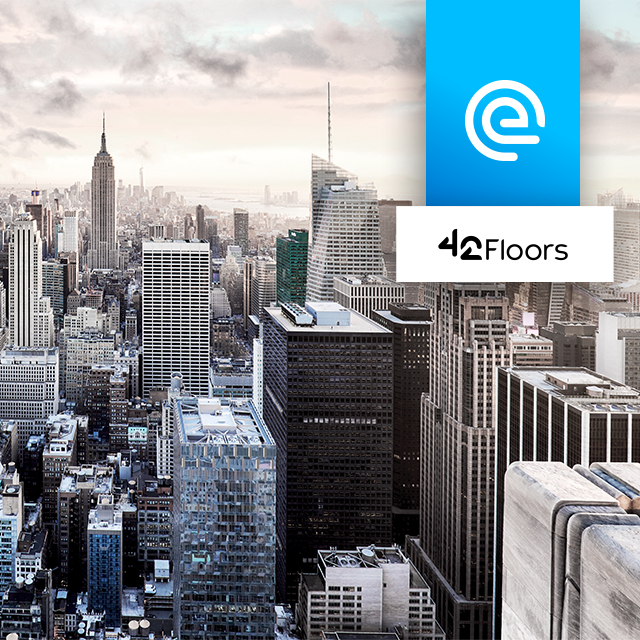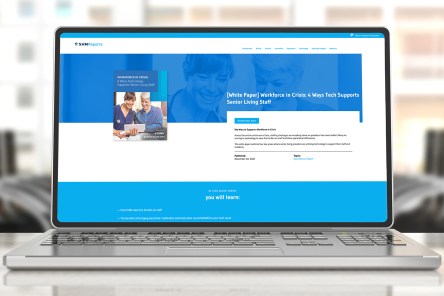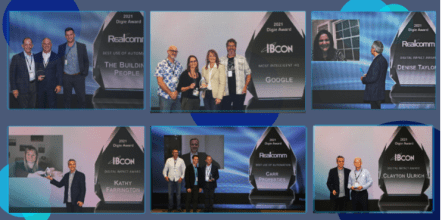Yardi has acquired 42Floors, a commercial real estate (CRE) listings platform created in 2011 that grew to become one of the top search engines dedicated to the industry. 42Floors.com has joined the ranks of Yardi commercial real estate listing, research and marketing platforms: The CommercialEdge marketplace network attracts 2 million visits to commercial property pages monthly and generates more than 200,000 leads per year across the CommercialSearch, CommercialCafe, Point2 and PropertyShark websites. Following the acquisition, 42Floors was redesigned to offer an even higher-quality commercial property search experience with a catalog of more than 320,000 listings nationwide across several verticals — from traditional office, coworking and flexible spaces to retail and industrial and warehouse properties. The upgraded platform is integrated into Yardi’s system of software solutions that are tailored to provide an efficient and streamlined experience for tenants, investors and commercial real estate professionals alike. “We are excited about the continued expansion of what is one of the fastest-growing networks of commercial real estate property research and marketing platforms,” said Brian Sutherland, vice president of commercial at Yardi. “With the addition of 42Floors.com, we can provide even more depth of data and high-return avenues of visibility for CommercialEdge clients to market and drive their business.” 42Floors.com was purchased from Roni Mova, principal of United Group, who was represented by Dan...
Exactly How COGIR
Advances Resident Care
Despite the ongoing challenges in senior living, certain providers have pushed forward, raising their level of excellence and enhancing residents’ experience. COGIR Senior Living certainly illustrates that point, and we’re here to share an in-depth look at their journey to date. That’s right — we’re rolling out our newest case study! It’s all about this leading provider’s ability to raise the bar with help from senior living technology. Courtesy of Benoit Levesque, senior regional director at COGIR Management USA Inc. and our inspiring interviewee, this piece offers an inside look at COGIR’s road to success. Keep reading to see exactly how the Yardi Senior Living Suite gives COGIR the tools to streamline care, increase move-ins and more. Meet COGIR Senior Living COGIR Senior Living puts their residents first. As a subsidiary of COGIR Real Estate, COGIR draws upon 25 years of residential and senior living management, as well as hospitality services. Their unwavering drive to build more homes for seniors — and their dedication to quality — has positioned the company as the industry leader they are today. The challenge with disparate systems At the time they established a strong U.S. foundation, COGIR’s day-today operations involved manual processes. From tracking leads to developing new care plans, teams across the company were navigating a mixture of paper-based and electronic systems. While COGIR did have some software tools in place, each system wasn’t necessarily connected to the next. Leadership worked to unite every piece on their own using different strategies. Ultimately, the integration of the different systems — a custom infrastructure — brought new challenges. “The integration between all our moving pieces worked with some restrictions, but there was a lack of operational efficiency,” said Levesque. “Too often we were hearing, ‘I don’t know if...
Argentum President
Named Top Lobbyist
For Argentum, a passion to help seniors, caregivers and families is the driving force behind their advocacy efforts. This year in particular, Argentum is fighting for targeted federal pandemic relief for assisted living caregivers. At the forefront of that mission is James Balda, president and CEO of Argentum. And given the association’s commendable efforts, it’s no surprise that Balda made Washington, D.C.’s list of top lobbyists for 2021. James Balda Argentum earns national recognition Released by The Hill newspaper, the list of top lobbyists is an annual tradition. It recognizes people who’ve effectively drove change for their clients — those who stand out from others in the field. The 2021 honorees, like Balda, have delivered results in halls of Congress. Crediting Argentum’s staff, Balda pointed to the success of the association’s latest grassroots efforts in a company press release. This includes outreach to Congress and the White House to save the Provider Relief Fund (PRF), intended to aid healthcare providers suffering pandemic-related losses. “Argentum members and all stakeholders in the assisted living profession marked 2021 as a crucial pivot point for our work given the financial and workforce crises our caregivers face,” said Balda. “Making The Hill’s top lobbyist list is a reflection of the hard work Argentum staff and our member providers put in and continue to put in as this pandemic is not over, nor is our fight for adequate financial relief and support.” The association’s mission Since 1990, Argentum has supported companies operating professionally managed, resident-centered senior living communities. Not to mention, the seniors and families they serve. The association is in the midst of a “Don’t Leave Us Behind…Again” campaign, urging the current administration to direct PRF funds to senior living caregivers. It’s a great honor to drive positive...
Seeking New Routes
For Work Commutes
“This telework phenomenon has shown people that they don’t have to be in the office all the time,” notes Tim Lomax, research fellow at the Texas A&M Transportation Institute. That realization has prompted many people to rethink options for getting to work – or if it’s necessary at all. Is a physical presence at work necessary, and if so, can commuting be made easier, more pleasant and environmentally conscious? “Tele” might be a permanent prefix for a long time. A survey of Californians released by the University of Southern California in April, for example, reported that more than half of telecommuting workers want to keep working from home at least three days a week after the pandemic ends. Just 18% wanted to go back to in-person work every day, while 31% said they would be happy working from home five days a week. Some businesses, seeing no harm to their profitability from remote work, might allow telecommuting as a full-time option. Looking at it from the employer’s point of view, about 30% of respondents to a poll of more than 300 North American employers by global advisory firm Willis Towers Watson said they expect about 30% of their full-time employees to work from home in three years, up from 5% three years ago. “Lots of [workers] want something in between their Zoom-based present — which has tested work-life boundaries and left many feeling isolated from their colleagues — and a full return to daily commuting that drained our time, energy and wallets,” says Nico Savidge, reporting in the Marin Independent Journal. But Lilac Nachum, a professor of international business at Baruch College, says that knowledge and innovation-based industries have the least to gain from working from home permanently because a significant amount of creativity,...
LCS Ranks #1
In Resident Satisfaction
Putting senior living residents first — providing the best possible care year after year — takes a unique level of dedication. Operators need to focus on every detail of the resident experience. And Yardi client Life Care Services (LCS) is the perfect example. A big congratulations to LCS for ranking number one in resident satisfaction among independent senior living communities in the 2021 J.D. Power U.S. Senior Living Satisfaction Study. Not only did LCS earn this impressive accolade, they’re also the first and only senior living company to do so three years in a row. LCS ranks #1 in resident satisfaction The J.D. Power U.S. Senior Living Satisfaction Study evaluates resident satisfaction among top independent living providers. To rank the highest, organizations need to provide outstanding services and compassionate care. And you guessed it — LCS fits the mold. Their number one ranking, with a tremendous score of 817, is based on responses from residents across their communities. The Iowa-based company also achieved the highest score in all six factors of satisfaction, including: Resident activitiesCommunity staffPrice paid for services receivedResident apartment/living unitCommunity building and groundsDining “Life Care Services is honored to be recognized by our customers as the best among independent senior living communities for the third consecutive year,” shared Joel Nelson, president and CEO of LCS. “We are privileged to serve nearly 40,000 seniors across the nation. This recognition is meaningful because our residents recognize and value our commitment to serving them first and foremost, even as our industry navigated challenges over the past year.” The pandemic has certainly shifted all aspects of senior living. It’s created unparalleled challenges for providers and their staff, who’ve worked tirelessly to care for residents despite ongoing restrictions and unforeseen obstacles. So it’s a special honor to...
GRESB Holds Key
To ESG Improvement
The buildings sector accounts for about a quarter of Canada’s total final energy consumption and approximately 15% of greenhouse gas (GHG) emissions when emissions are associated with electricity used in buildings, according to Efficiency Canada. Canada’s buildings, which require both heating and cooling, are particularly reliant on energy use, which in most cases produces carbon. The government has committed to cutting the country’s greenhouse gas emissions by 40-45% below 2005 levels by 2030 and is set to achieve net-zero emissions by 2050. Attaining these goals will require all sectors, including property management, to gain a clear understanding of their energy performance. That makes ESG a megatrend “that will continue to have a transformative impact on the industry,” says Richard Joy, executive director of Urban Land Institute Toronto. Gaining a deeper understanding of energy performance and how to improve it in 2022 will require real estate professionals to perform more energy benchmarking and better tracking of their buildings and portfolios’ energy performance. Leveraging accurate energy consumption data helps property owners confidently compare their performance against their own standards and others in their sector. Accessing this information in real time drives informed decision-making about productive building improvements and investments. “Technology and data analytics can assist with analyzing opportunities of growth and making better-informed investments,” notes Frank Magliocco, national real estate leader for PwC Canada. GRESB drives ESG insight A key resource for detailed energy performance information is the Global Real Estate Sustainability Benchmark (GRESB), an organization that benchmarks real estate assets’ environmental, social and governance (ESG) performance and provides standardized and validated ESG data to the capital markets. GRESB evaluations help real estate stakeholders improve their sustainability performance and satisfy growing investor demand for timely, reliable and accurate ESG information. The 2021 global GRESB evaluation measured...
The Purr-fect Remedy
Kitten Therapy at Pacifica
Do you ever get tired of kittens making headlines? Neither do we. Yardi client Pacifica Senior Living transforms the lives of residents one purr at a time. Its property, the Meridian at Anaheim Hills, is warming hearts and improving outcomes for residents with weekly Kitten Therapy Day! 1051922 The program offers benefits for residents and felines. Kitten Therapy Day: the start of something wonderful Meridian business manager Lori Irby first brought kittens to the office back in 2019. She is an ASPCA foster caregiver . When newborn kittens were abandoned at the Orange County animal shelter, she took them into her home and into her office where she could feed them every few hours. Shortly after setting up a playpen for the kittens in her office, residents took interest. Irby received an influx of guests. She noticed how quickly the kittens made their impact on the residents: disinterest transformed into engagement and smiles graced faces that had been chronically tense or sad. Irby decided to collaborate with the site activities director to begin Kitten Therapy Day every Wednesday. The event shifted from Irby’s office into one of the community’s shared spaces. All residents who are cat allergy-free are welcomed to snuggle up with the kittens. For residents who cannot leave their rooms, Irby places a few kittens in a stroller for kitten therapy on the go. “For many, it’s the highlight of the week. It’s given residents something to look forward to, especially during the pandemic when no visitors could come in. There’s just something really warm and comforting about holding a purring kitten,” says Irby. The kittens usually stay in the Meridian program for about eight weeks before they are formally put up for adoption through the ASPCA. More often than not, there’s already...
Senior Living Ebook
How Tech Supports Staff
The current staffing shortage is a pressing challenge in senior living. How can providers support their staff, improve resident care and keep their communities in sync? That’s the focus of this brand-new ebook, a collaboration between Senior Housing News and Yardi. This resource — Workforce in Crisis: 4 Ways Tech Supports Senior Living Staff — offers key tips for today’s providers. Explore this senior living guide Curious how technology is helping senior living communities through the staffing shortage? Here’s a snapshot of the four areas covered in the ebook, complete with input from real-life providers using tech solutions: 1. Easing the burden with an EHR Given the staffing crisis, electronic health records (EHRs) are more important than ever. A well-designed tech solution like Yardi EHR optimizes care plan workflows, promotes dynamic staffing management and more. Yardi client Anthology Senior Living offers insight in the ebook, noting the benefits of a connected EHR system. “There’s just a lot more opportunity for growth and development, and of course efficiency, when you start utilizing an EHR,” says Kim Smart, director of systems and support at Anthology. 2. Easing the burden with an eMAR When coupled with an electronic medication administration record (eMAR), the benefits of an EHR are enhanced further. The ebook dives into the importance of this integrated duo, exploring exactly how it helps senior living staff maximize efficiencies. Yardi client Sagora Senior Living knows firsthand how Yardi eMAR, an integrated solution, streamlines medication management and enables emergency staffing patterns. “We cross-trained the key associates in our communities in the ways of managing medications, in case they needed to assist — and in many of our communities they actually did have to assist,” says Brenda Abbott-Shultz, RN, VP of resident services at Sagora. 3. Easing...
Energy News Updates
From the Dept. of Energy
We last summarized news and trends produced by the Energy Information Administration in April. Here’s some of what’s new from the EIA, a statistical and analytical agency of the U.S. Department of Energy that collects, analyzes and disseminates energy information. Commercial buildings grow larger and more energy-conscious Commercial buildings in the U.S. are getting larger and more oriented toward energy efficiency, according to data from 2018 released in September. The number of commercial buildings grew 6% from 2012 to 2018 while total floorspace increased by 11%. Commercial assets more commonly include features such as LED lighting, which is used in more than 2.5 million commercial buildings, and electric vehicle charging stations, which are available at more than one-third of buildings over 500,000 square feet. Renewable energy share grows Renewable energy is expected to account for 23% of U.S. electricity generation through 2022, up from 20% in 2020. About 50 gigawatts of solar and wind capacity is scheduled to come online nationwide during that period, with 2022 as the first year that growth in utility solar capacity will outpace wind capacity growth. Retail sales of electricity to the U.S. industrial sector will increase by 5.1% in 2021, a major element of the overall increase of 2.8%. Electricity sales will be somewhat lower (2.1%) in the commercial sector as many workers continue working from home. Batteries amp up U.S. battery power capacity grew by 35% in 2020 and tripled over the preceding five years, with much of the growth coming from energy systems co-located with or connected to solar projects. EIA projects that battery power growth will continue, with utilities reporting plans to install more than 10,000 megawatts of additional large-scale battery power capacity from 2021 to 2023. “Energy stored in batteries can react to second-to-second fluctuations in the electric grid, protecting grid power quality and improving the grid’s efficiency,” said EIA Acting Administrator Steve Nalley. “Battery systems can help store electricity generated from solar or other renewables so that electricity is available at times when demand is peaking, but generation from renewables is lower.” Natural gas price volatility looms Concerns about winter weather are contributing to volatile natural gas prices. “Mild weather has limited natural gas consumption and helped bring our storage levels closer to average in recent weeks, but cold winter weather could continue to put upward pressure on prices,” Nalley said in November. “Winter temperatures will be the key driver of natural gas demand, inventories, and ultimately prices.” Despite relatively high natural gas prices, the U.S. electric power sector continues to use significant amounts of natural gas for generation, with exports of liquefied natural gas in October 2021 rising 37% above the October 2020 level. Stay tuned for more EIA updates in 2022. Meantime, learn how Yardi software solutions help residential and commercial property owners manage their energy consumption efficiently and meet ENERGY...
Amping Up Amenities
Property Owners Think Big
Amenities like fitness centers, laundry rooms and pet services are standard at many residential and commercial properties. So ordinary are they that property managers are striving to deliver increasingly elaborate offerings to attract residents and tenants. Real estate investment information source Millionacres.com says, “If you want your units to fill up quickly and stay filled, you’ll want to offer the best apartment amenities possible for your tenants.” That doesn’t just mean rooftop pools, private restaurants, pet spas and indoor skate parks for high-end space. “Desirable amenities can be offered at smaller properties, too.” Dog grooming services can be a plus for pet owners. As for commercial space, San Diego commercial real estate investment firm Locale notes, “Spare corner weight rooms have transformed into fully equipped, professionally staffed fitness centers; the corner coffee cart has evolved into a chic, onsite café complete with baristas serving specialty coffee; and outdoor seating areas have expanded to include meditation gardens, dog runs, and sports fields.” Residential: Exceeding the expected As Millionacres and other property management industry observers suggest, owners and managers might want to consider stepping up their game for residents who expect: More than just enough space for parking and bikes. Service enhancement options include assigned off-street parking with additional spots for guests and bike storage, and electric vehicle charging-equipped garage parking.A larger welcome mat for Rover. Consider expanding the pet-friendly policy with a dog park or grooming\spa services.Energy efficiency. Many tenants seeking sustainability and cost savings opportunities expect upgrades like compact fluorescent lamps instead of incandescent ones, solar panels or fuel cells rather than grid-based fossil fuel power with, LEED certifications, and ENERGY STAR® certifications for refrigerators and other appliances that meet stringent energy-efficiency standards.Better building heating and cooling systems, featuring central air and heating systems...
Digie Awards
Yardi clients honored
Five Yardi® clients earned Digie Awards, one of the highest honors in the commercial real estate industry, at the recent Realcomm | IBCon 2021 event. Short for Commercial Real Estate Digital Innovation, Digies recognize outstanding companies, real estate projects, technologies and the next generation of smart, connected, high-performance, intelligent building systems. Digies are also awarded to individuals who have positively impacted the industry through the application of technology, automation and innovation. This year, Realcomm focused on honoring those who are “leading the charge on COVID-19 strategic and transformational technologies, creating a more efficient, effective and adaptive industry and shaping the future of smart buildings.” Among this year’s winners were the following Yardi clients: QuadReal Property Group won the Most Intelligent Portfolio, Office award, in recognition of their “smart, connected, high performance intelligent building concepts.” In recognition of their “extraordinary level of automation, technology and innovation to their business processes,” The Inland Real Estate Group of Companies won the Best Use of Automation, Retail Real Estate, JLL won the Best Use of Automation, Commercial Services and Invesco won the Best Use of Automation, Investment Management. Ilan Zachar, Senior Vice President & CTO, Carr Properties won the Realcomm Julie Devine Digital Impact Award that acknowledges “those individuals who saw things ahead of their associates, had the courage to leave the mainstream and the tenacity to keep standing up after many failed attempts.” Zachar directs all corporate technology, strategy, and standards for Carr Properties. “Yardi is impressed with the extraordinary achievements of the companies and standout individuals who are shaping the future of the industry through transformational technology. We applaud all the award winners and look forward to what we can achieve together as an industry moving forward,” said Rob Teel, senior vice president of global solutions for Yardi. Teel was a...
Argentum Leadership Summit...
Meet With Yardi
It’s nearly time for the annual Argentum Senior Living Leadership Summit, a 4-day event gathering thought leaders and policy makers in senior living. This one takes place December 5-8 in Amelia Island, Florida. With a range of speakers set to host inspiring sessions, the can’t-be-missed event will spark conversations on the most pressing topics in senior living. Most importantly, leaders will discuss relevant solutions for today’s challenges. You’ll find team Yardi at the summit, too. We’re pleased to be a sponsor and we can’t wait to meet you there. Check out the details Argentum is a leading association in senior living. They’ve proudly advocated for choice, independence and quality of life for all seniors since 1990. They’re expert at bringing industry leaders together for insightful discussions, networking and learning. And this year’s summit, inviting C-suite and corporate leadership from senior living’s most influential companies, is no exception. Hosted at the Ritz-Carlton in Amelia Island, the schedule includes: The Argentum Board of Directors and member group meetings (December 5-6)The Argentum Advocacy Fund Golf Classic (December 6)The Senior Living Leadership Summit (December 7-8) Speaking sessions start December 7, covering intriguing topics such as: Tested Strategies for Driving OccupancyDemographic Strategies for the Post-COVID EraWorkforce Technology and Solutions You can check out a more detailed agenda from Argentum. For a list of event speakers, visit this page. Meet with us at the Argentum Senior Living Leadership Summit Not only is this a stellar opportunity to convene with fellow leaders, address industry obstacles and discuss the future of senior living, it’s also a chance to explore innovative solutions built to drive your business forward. We invite you to find team Yardi to chat about our single connected solution, designed for the unique needs of senior living management. We’ll...
Creative Solutions
Military Relocations Made Easier
He said it best: “The housing market is just going gangbusters across the country, that’s a good thing for the economy, but it makes it challenging if you’re looking for a rental property.” That’s a quotation from Maj. Gen. Omar Jones, deputy commanding general of Army Installation Management Command. He voiced what many renters, including military families, are feeling this year. Fortunately, military families are receiving support in two creative ways. One person’s joy is another person’s challenge Military families face reassignment, or relocation, every 2-3 years. This year, military families have found it increasingly difficult to transition into their new assignments. The relocation challenge is threefold: The housing market is thriving, with buyers and renters both combatting high rates (and each other) for deals.High demand on movers, paired with staffing challenges, has caused scheduling delays. The industry has experienced a 25% decrease in labor and a nation-wide backlog in scheduling.If the spouse is working, the spouse must secure new employment in their field within the designated re-assignment window.On average, military families are given assignment instructions 166 days before their report date. Since the summer, that hasn’t been enough time. The delay has been so burdensome to families that Army authorities are delaying scheduled changes of station. To support families, the Army has initiated a program to help nearly 54,000 soldiers find housing. The program includes more lead-time for families to find housing and secure movers as well as an innovative agreement with Lendlease. Lendlease is an international hotel group that now specializes in privatized military housing. The organization signed an agreement that permits soldiers and their families to secure temporary housing at designated hospitality sites while continuing their search for a house. Military families will receive standard housing allowances in these cases. Additionally,...
Energy Innovation
ARPA-E Projects Update
The Advanced Research Projects Agency-Energy, which performs R&D for the U.S Department of Energy, sponsors initiatives by businesses and academic institutions to improve energy efficiency. Here’s the latest of our periodic summaries of active ARPA-E projects. Creating a new version of wood Alternative materials creator InventWood of College Park, Md., is working to develop lightweight 3D corrugated honeycomb structures to replace metal counterparts. 3D wood has one-third the density and one-fourteenth the cost of aluminum with the same mechanical strength. And the proposal could produce a big sustainability benefit as well – a 90% reduction of CO2 emissions in the manufacturing process. Adding the human touch to energy savings About 75% of U.S. homes have smart meters, according to Smart Energy International. While giving homeowners greater access to their energy-use data is a positive step, a team Stanford University researchers believes that optimizing energy and cost savings with that information will “require an understanding of human behavior.” Using human behavior to optimize energy and cost savings could “transform the way Americans interact with our energy-use data,” the team says. A custom-built web-based platform collects historical electricity data for experiments to learn what triggers homeowners to respond. The experiments include financial incentives and a calculator that illustrates the potential savings of efficient appliances. Once completed, the platform and new behavior experiments could help homeowners save energy, improve their energy efficiency and reduce utility bills. Making the power grid cleaner ARPA-E is funding four projects to develop technology to remove sulfur hexafluoride, a gas that’s utilized as an electrical insulator and arc suppressant, from the U.S. power grid. It’s a more potent greenhouse gas than carbon dioxide. Proposals from the funding recipients – the University of Connecticut, Georgia Tech, GE Grid Solutions of Charleroi, Pa., and...
Health + Home
Supporting Residents through the Holidays
Did you know that our home environment impacts how we feel? During the holidays, multifamily professionals can increase the perceived value of the property while supporting resident wellbeing and promoting resident loyalty. It all starts with decorating. Drive value while helping residents fall in love with your property again Resident retention saves time and money. Per the National Apartment Association, it costs between $1,000 to $5,000 to turn a unit. If you gained just one renewal each month, you could save $20,000 in annual expenses and about 96 hours of maintenance labor. Promote resident retention through thoughtful programming that shows residents that you care. This includes special programming to support residents who are struggling through the holiday season. Design programming can be a great place to start. Design to beat winter blues together Nearly 40 million Americans experience depression and anxiety, reports the Anxiety and Depression Association of America. The fall and winter seasons are especially challenging. The American Family Physician reports that up to 26% of Americans suffer from seasonal affective disorder (SAD) formerly called seasonal depression. Scientists note a correlation between less exposure to sunlight (vitamin D), decreases in serotonin and an uptick in melatonin. Those factors may exacerbate existing conditions around holiday social and financial stresses, loneliness and grief. Community managers are not clinicians. There are several resident services that community managers can offer, however, to support resident wellbeing during the holidays. Focus on fun yet effective services that turn resident homes into mental health havens. Host healthful interior design classes Consider inviting a healthy interior design expert to speak to your residents. The American Society of Interior Designers has representatives nationwide. You might also research environmental psychologists in your area. These specialists understand how our built environments can impact our...
American House
Joins SAGECare
Founded in 1979, American House Senior Living Communities is continuing their legacy of care today. Their vision has been — and still is — to provide quality housing for seniors at an affordable price. American House operates over 54 communities centered in Michigan and spread throughout the Midwest, New England and Florida. This Yardi client is the gold standard for passionate resident care, which they’re currently taking to the next level. We’re proud to spotlight American House for working through SAGECare, an inspiring step toward building LGBT-inclusive communities. American House joins SAGECare What does SAGECare entail? First, let’s cover who SAGE is. Dating back to 1978, they’re a fast-moving organization with a mission to support LGBT seniors. Their advocation efforts extend across federal, state and local levels. More specifically, SAGE works to: Mobilize LGBT people and alliesEducate policy makers on LGBT aging issuesRelease original policy briefs and other key resourcesLead coalitions that include diverse seniors in policy conversationsMarch and rally with LGBT seniors, plus allies SAGECare is SAGE’s training and consulting division, which assists senior care agencies in creating LGBT-inclusive services. They’ve proudly trained over 60,000 providers across the country — all of whom earned the respected SAGECare credential. Completing the training is a purposeful mission for American House. SAGECare focuses on improving providers’ knowledge in the LGBT space, teaching them to identify bias against LGBT seniors and ultimately, helping them address prejudices that impact LGBT seniors’ quality of care. SAGECare also provides marketing materials to companies like American House, offered once the training is complete. This includes symbols for providers to highlight their earned credential, along with their commitment to LGBT seniors. They’re also listed as a credentialed provider on SAGE’s website. Learn more about SAGECare, a cultural competency training program for providers...
Maravilla Seniors
Test Power of VR
Throughout the COVID-19 pandemic, seniors and their families have experienced loneliness and isolation. From enforcing strict lockdowns to limiting in-person visits, senior living communities have seen this firsthand. So how can communities work to improve seniors’ quality of life? One theory, developed by two UC Santa Barbara professors, is through virtual reality (VR). Specifically, through VR sessions with seniors and their loved ones. This theory is being put to the test with seniors at Maravilla Santa Barbara. Testing the power of VR sessions With 21 pairs of Maravilla residents and remote family members, professors Tamara Afifi and Nancy Collins began their research in 2020. Their goal remains to show the impact of VR technology on social connection — and quality of life — for seniors residing in communities. Not to mention, the impact of VR sessions on these seniors’ family members. In this highlight, Collins explains the bigger picture of the study. “The long-term goal is to find ways to use innovative technologies to reduce social isolation, strengthen family bonds and improve quality of life for older adults with varying levels of cognitive impairment,” she said. According to the pilot study findings, VR sessions reduced feelings of loneliness, improved moods and helped enhance seniors’ quality of life. For families, the VR sessions led to better moods and less caregiver guilt. “A family is a system, so when you help one person, you’re helping the whole family,” explained Afifi. “This is especially true for caregivers, who can bear a particularly heavy burden in terms of stress and guilt.” Afifi and Collins also tested how memory decline effects seniors’ engagement during VR sessions. They found that seniors with mild cognitive impairment were more kinesthetically engaged in the VR experience, whereas seniors with mild to moderate dementia...
Fresh Enhancements
Senior Living Suite
We’re always working to upgrade solutions in the Yardi Senior Living Suite. We chat with clients, test new ideas and make adjustments each year — all to help senior living providers succeed. Improvements and fresh features are bundled and released for our clients to enjoy. With that, Yardi Voyager Senior Housing 7.15 is now available. It’s packed with exciting features and enhancements. We’re here to share it with you. Explore this rundown of the latest and greatest functionality in the Yardi Senior Living Suite: Voyager Senior Housing New amenity-based pricing featureAbility to add attachments to move-in checklist itemsPrimary payer change function for residents whose services can’t be managedFresh reports including financial move-in and move-out activity Watch the overview video RentCafe Senior CRM Prospect persona and competitors trackingAmenities and inventory matchingOption to assess residents for billing recommendations, included in the leasing workflowNew preset report filters for your end users Watch the overview video EHR Ability to set minimum and maximum durations on default care plan actionsNew service plan audit report that shows changes in care plansOption to perform assessments on a prospect’s co-occupantUpdates to alert charting that enable separate corresponding alerts Watch the overview video eMAR Prescribers Connection interface now available for U.S. pharmacies, Kroll interface now available for Canadian pharmaciesNew EPCS feature for physicians to sign orders for controlled substancesOption to chart certain interfaced orders before they’re verifiedNew physician review queue to periodically review and digitally sign residents’ order profiles Watch the overview video In addition to watching the overview videos, you can also read our new features guides. Ready to upgrade? Get in touch and we’ll get to work. If you’re new to Yardi, check out our brand-new infographic to learn about our solutions in senior living....
Celebrating Unsung Heroes...
In EHR and Pharm Tech
What comes to mind when you think of Yardi software development? Techies at their desks, typing out code? Designers creating user-friendly interfaces? Clinicians, nurses and accountants might not be first in mind, but they play an essential role in the development of our senior living software. Get a behind the scenes peek at the workings of our Clinical and Compliance teams. These specialists come from a range of backgrounds, lending their expertise to develop software that works for you. Nurses, accountants, operators, oh my! Programmers and graphic designers create software, but it takes droves of other specialists to customize program features for the unique needs of clients. That’s where the Clinical and Compliance teams work their magic. It’s a two-fold purpose: to interpret the needs of clients (and relay it to the techies) and to interpret legalities that must be considered during development and updates. Lisa Conrad, manager of Clinical and Compliance at Yardi, leads a team of medical professionals and regulatory specialists that advise on product design and content. “There could be a misconception that the team is all nurses. Our team is comprised of members from differing professions and education. Each team member does have a healthcare background, but we cover the gamut from billing, operations, regulatory and clinical expertise.” Conrad, for example, began her career in informatics as a director of nursing for a provider in a long-term care facility. She adds, “We feel these diverse skill sets help us provide well-rounded content and solutions for the clients.” Big challenges offer big rewards for senior housing software professionals Senior wellness software is a particularly delicate field. Unlike commercial and multifamily tools, software that contains and transfers electronic health records ensures positive health outcomes. Prompt, efficient and accurate programs are more important...
Affordable Housing
For female veterans
Did you know that one of ten homeless Americans is a veteran? That’s more than 40,000 veterans without secure housing. The number of women among them is rising, per the United States Interagency Council on Homelessness (USICH). Volunteers of America is stepping up to help vulnerable female veterans get back on their feet. Actively supporting an overlooked population Veterans make up more than a tenth of people facing housing insecurity. Among them, about 20,690 veterans rely on shelters or transitional housing. The remaining 15,366 are unsheltered, living in cars or on the streets. Per USICH, women compose about 9% of veterans who are experiencing homelessness, and women are also about 9% of the overall veteran population in the U.S. Veteran women are more than twice as likely as non-veteran women to experience homelessness. Unlike their male counterparts, more than one third of veteran women who experience homelessness were subjected to military sexual trauma. They also have lower rates of substance abuse and mental health concerns than their male peers, the USICH report states. Family activity is also a differentiator. Veteran women experiencing homelessness are likely to be an active part of a family unit. The average family size is 3.6 members. Women are expected to become 12% of all active-duty members of the armed forces by 2025. The rise in participation foreshadows an increased necessity to address the unique needs female veterans. Judge Sarah J. Harper Village, serving women who have served America Volunteers of America (VOA) Ohio and Indiana have teamed up to support female veterans in the region. The organizations broke ground on Judge Sarah J. Harper Village, a long-term affordable housing community. The 12-unit project will have two buildings, each 3,000 square feet. Both have six fully furnished units. There are...




















